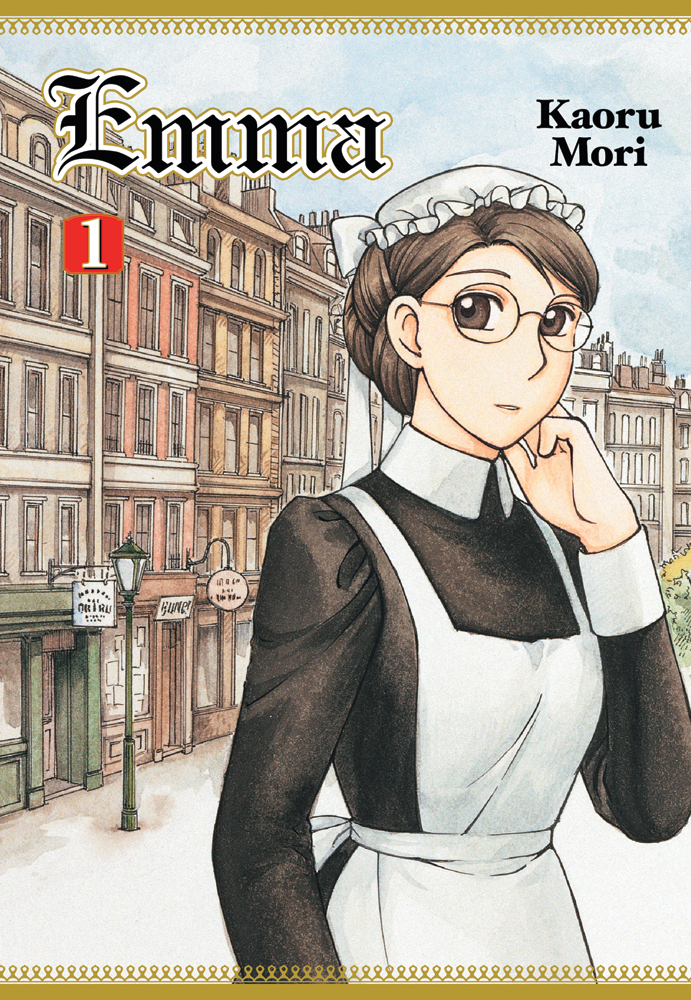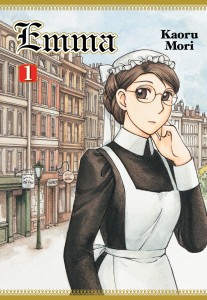By Kaoru Mori. Released in Japan in two separate volumes by Enterbrain, serialized in the magazine Comic Beam. Released in North America by Yen Press.
After the first omnibus set up the romance between our two reserved leads, the second volume keeps them apart until the very end. It’s better for both of them, really. Emma finds work at an estate Oop North that’s owned by a wealthy German couple, and impresses everyone at how fast she picks up on things and the smattering of actual education she has. Meanwhile, William is buckling down and doing everything that’s asked of him, behaving like a perfectly good heir – much to the shock of his sister, who wonders whether a pod person has possessed him. Honestly, I wish that were the case, because William still gets his moments of impulse, and they’re horrible – or will be soon.
Emma is by her very nature reserved and repressed, so it’s nice to see a few more loud, boisterous women added to the cast. The mistress of her new home is very casual about walking around naked, and Eleanor’s older sister Monica makes an immediate impression by storming into William’s house in the pouring rain to drip on his carpet and yell at him for stringing her sister along. Honestly, though she misinterprets what Eleanor says, she’s absolutely right, and sadly her anger leads to William being very stupid. Of course, I say this with a 21st century mindset. In his mind, he’s never going to see Emma again, so why not? After all, Monica’s “oh, I just picked the beau who worshiped me most’ marriage seems to have gone well…
We also meet William’s mother, though at first we’re not quite sure who she is. She offers a nice balance between the over-the-top dramatics of Monica and Mrs. Molders and the stoicness of Emma and Adele. We’re also not quite sure why she’s living away from the family – I’m sure that will come up soon. In any case, she offers the coincidence needed to reunite our star-crossed lovers, as she’s friends with Mrs. Molders, and therefore can borrow Emma from her to be her companion at a ball held to celebrate her son’s engagement. Emma’s shyness as she is prepared to debut in society is adorable yet painful, and the corset certainly doesn’t help. In fact, it may be the corset more than the revelation of William’s engagement that causes her to faint.
The end of this omnibus is absolutely beautiful. After so long apart, and some a shy, repressed love story in the first volume, Emma finally loses it and begins openly sobbing and holding William. Their kiss this time around is much more passionate, and I’ll be honest, I was expecting the worst possible choice to walk in. Luckily, it’s just his mother, and she’s possibly one of the few people who wouldn’t care. Still, this is a nice lead-in to the horrible fallout that I’m sure will happen in the third volume. I wonder if Monica will actually challenge William to a duel of honor? In any case, for those who missed this when CMX put it out, go get it. It’s a classic.



